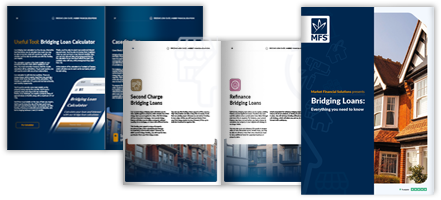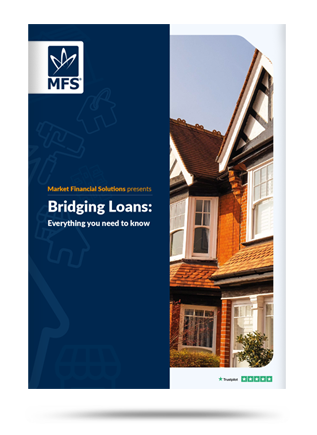
Written by Scott Lord
Deputy Chief Mortgage & Operations Officer – Front End
Market Financial Solutions are a bridging loan and buy-to-let mortgage provider and are not legal, financial, investment or tax advisers. This document is for informational purposes only and does not, and should not be considered, to constitute legal, financial, investment or tax advice or be relied upon by any person to make a legal, financial, investment or tax decision. Therefore, Investors are encouraged to seek appropriate professional advice. The information in this content is correct at time of writing.

While there is a difference between cashflow and profit, the two tend to be syncronised. If you don’t have a decent, stable cashflow, you’re often unlikely to make a profit.
They both reflect the financial health or feasibility of a property investment. It is important to recognise, however, that there are significant differences between the two terms. Understanding those differences is essential.
Whether you are a seasoned investor or are looking to make your first foray into the world of property investment, this blog will explain the difference between cashflow and profit.
What is cashflow?
In the context of property investments, cashflow is the net incomings and outgoings related to a property investment. Usually, the income comes in the form of rental payments, while outgoings could be agent fees or maintenance.
Cashflow provides investors with a clear insight into how much money the property generates on a monthly or yearly basis. A simple cashflow calculation involves subtracting a property’s operating expenses from its rental income.
A positive cashflow occurs when the rental income exceeds the operating expenses. Where the expenses outweigh the income, you will have a negative cashflow.
‘Free cashflow’ is another term that is worth understanding. It refers to surplus cash that an investment property generates after accounting for all costs. These could be operating costs, financing expenses, and capital expenditures like repairs. Free cashflow represents the additional capital that an investor has available to reinvest or use to cover debts.
What is profit?
Unlike cashflow, profit can be defined as the financial gain or return – rather than income – on a property investment, which can be realised by an individual investor, company, or other setup.
As such, it represents the difference between the property’s total revenue and all related expenses. This can include operating costs, financing expenses, taxes, and any other associated outgoings. Profit can be calculated in a variety of ways.
There are a few key calculations that are regularly used, however. Gross profit, for example, is the difference between the property’s rental income and its operating expenses. However, this calculation does not account for other costs such as mortgage repayments, loan interest, or taxes.
To account for these costs, one must calculate the property’s net profit, which provides a more comprehensive picture of a property’s performance. Put simply, this subtracts all associated costs from the income generated, and not just ongoing expenses.
Finally, you can calculate profit through cash-on-cash return. It measures the property’s profit in relation to the initial cash investment made by the investors. This accounts for both the property’s net profit and the initial investment, such as down payment, deposit, stamp duty, closing costs, and so forth.

What are the key differences between cashflow and profit?
For property investors, cashflow focuses on the actual money moving in and out of an investment property. It provides a short-term view of the financial health of the venture.
Profit, on the other hand, takes a broader view. It considers all the expenses involved to gauge the property’s long-term viability as an investment project.
This means that a positive cashflow will ensure the property covers immediate expenses. But the concept of profit is used to evaluate its return on investment over time.
It is important to balance both of these metrics when making decisions about an investment property. You need to recognise that they provide different – but useful – perspectives on the vitality and profitability of a property’s finances. To fully get to grips with both, you’ll want to seek guidance from qualified financial experts such as accountants.
Is cashflow more important than profit?
There is a difference between cashflow and profit, but both metrics hold important roles to play. But, cashflow may be seen as the more important metric when measuring a property investment’s feasibility, at least in the immediate term.
Largely, this is because, profit generally considers the overall return on investment of a property, which is usually measured over the long-term. But, cashflow provides landlords and investors with the finance they need to pay their bills on time, meet their mortgage repayments, and maintain their property.
In other words, cashflow provides real-time liquidity, while profit can be influenced by external non-cash factors like depreciation, market trends, and unexpected economic or political shifts.
Therefore, where profitability may vary over time, landlords with a positive cashflow can at least be reassured that they can sustain their investments. Without a positive cashflow, achieving a profit is often difficult.
How to forecast cashflow?
To forecast cashflow, investors should build a cashflow model. This involves adding up your expenses and subtracting them from the income that your property provides. It is vital a landlord ensures the calculation is accurate when they are measuring the feasibility of a property investment. This means factoring in all relevant expenses, such as:
- Mortgage or loan repayments
- Taxes – such as stamp duty and council tax
- Utility costs (unless they are passed onto the tenant)
- Cost of an Energy Performance Certificate (EPC)
- Costs of testing and maintaining the property’s gas and electrical safety
- Admin costs – such as marketing the property and employing an estate agent
Some consideration should also be made for future works that a property might need, particularly if the property is old or its appliances are well-used.
Understanding the difference between cashflow and profit, and how specialist lenders fit in
You could consider employing the services of a specialist lender to help you optimise your property’s cashflow.
For example, if you feel that you could access favourable mortgage rates elsewhere compared to your current mortgage, but implementing this could take time, you could use a bridging loan to refinance your property in the short term, in order to secure a different long-term financial solution. However, it is important to seek professional advice when making investment decisions.
At Market Financial Solutions, we provide bridging loans which allow you to replace existing finance secured against a property. You can borrow between £100,000 and £50,000,000, depending on your circumstances, and we can have funding issued in as little as three days.
To find out more about our loans, head to our website.
The Complete Guide to
Bridging Loans
Everything you need to know
- Different bridging types
- Useful tools
- Apply them in real life
- Market insights & more





